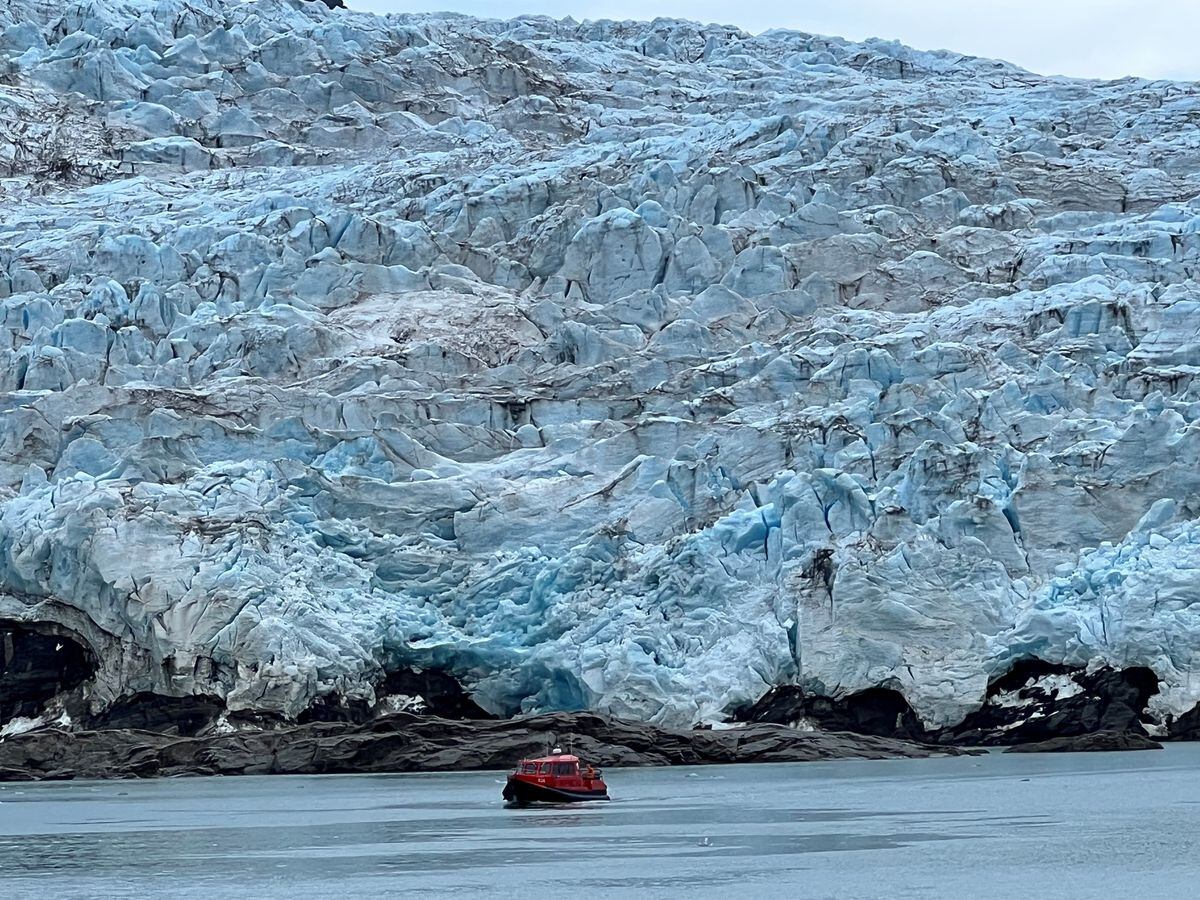Loss of ice mass in the far north: "It would be a big mistake to consider the ice shrinkage in the Arctic to be a problem only for polar bears"
Photo: Paul Souders / Getty ImagesIf aliens were to observe the earth from a distance, they would know that something is wrong with our planet. The Earth's northern polar cap has shrunk dramatically in just a few decades. Never before has the Arctic Ocean seen such a low ice cover in July as this year. The negative record is part of a steady downtrend due to global warming. The Arctic Ocean has lost around three million square kilometers of ice cover in the last forty years - that's eight times the area of Germany (see graphic).
But this Arctic summer is not only extreme because of the low ice cover. A month-long extreme heat wave hit Siberia, with a new record temperature of 38 degrees Celsius within the Arctic Circle on June 20th. According to one study, this heat wave would have been next to impossible without climate change. Favored by drought and heat, extreme forest fires in Siberia darkened the sky with smoke, sometimes as far as Alaska. The evaluation of charcoal in sediment cores from Alaska suggests that the increase in fires in the far north has now reached a level that has been unique in at least 10,000 years.
Temperatures in the Arctic have risen around three times as much as the global average over the past 40 years. The main reason for this particularly intense warming is the intensifying feedback caused by the ice receding: the less ice there is, the less solar heat is reflected back into space.
The warmth of the last few decades clearly exceeds the temperatures of the previous two millennia in the Arctic. The sea ice cover for the last 1450 years could also be reconstructed from ice cores and other so-called proxy data (see graphic). Since the early Middle Ages, ice cover has initially increased slightly in late summer (in line with the temperature data showing cooling due to the earth's orbital cycles), until modern warming caused by fossil energy use initiated a massive decline in ice.
Reconstruction of the ice cover by Kinnard et al . - the uncertainty of the blue curve is around +/- one million square kilometers. Observation data from 1870 onwards are shown in orange, the trend of the satellite data in red.
Centuries of attempts to find a north-west passage through the Arctic Ocean failed in the ice - the tragic climax was the fatal end of the Franklin expedition in 1845. Roald Amundsen finally succeeded in 1903-1906 with two hibernations. In 2007, the Northwest Passage was ice-free for the first time in living memory; a year later even the Northwest and Northeast Passages. The latter was crossed for the first time by cargo ships of the Bremen-based Beluga shipping company in the summer of 2009. Shipping through the Arctic is now almost normal, and the Arctic is increasingly becoming the scene of the race for raw materials and the influence of the great powers.
But what happens in the Arctic does not stay in the Arctic. Warming and ice shrinking there affect us all. Not only because the warming there is making a rapidly growing contribution to Greenland's global sea level rise. Or because the thawing permafrost releases the methane.
The processes in the Arctic are already changing our climate. Because the large temperature gradient between the subtropics and the Arctic drives our weather in the middle latitudes. The strong warming of the Arctic reduces this temperature difference. Therefore, especially in summer, the polar jet stream weakens, which meanders around the northern hemisphere at an altitude of around ten kilometers, and in whose turns the high and low pressure areas that determine our weather are embedded. As a result, the weather in summer becomes more stable and less changeable; certain weather conditions last longer, such as the "eternal summer" of 2018 in Europe. The forest in Germany in particular is still suffering from the consequences of the past two years of drought.
In addition, the weaker jet stream starts to vibrate more easily, which can build up for weeks - a phenomenon that, according to current research, is also likely to be intensified by the increasing temperature contrast between land and ocean. Rural areas are heating up more, which is why Germany has already seen two degrees of global warming. In contrast, marine areas are warming more slowly - large parts of the northern Atlantic are even cooling as a result of the weakening of the Gulf Stream. Persistent strong waves in the jet stream lead to extreme weather around the northern hemisphere. Future droughts could hit several granaries around the world at the same time and lead to dangerous crop failures.
It would therefore be a big mistake to believe that the Arctic ice retreat is a problem only for polar bears and ignore the red blinking warning signs.
Icon: The mirror






